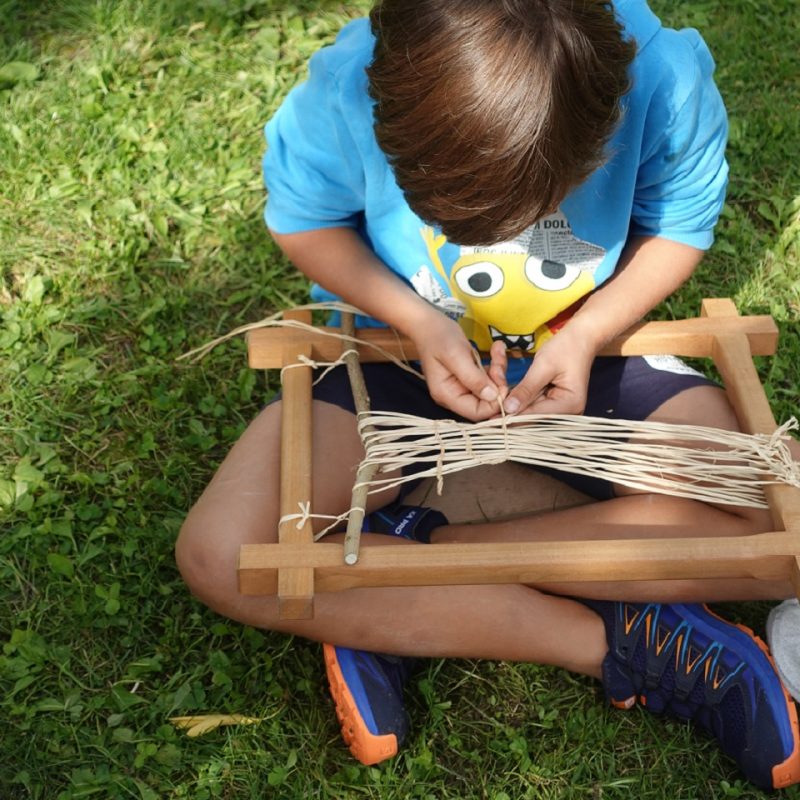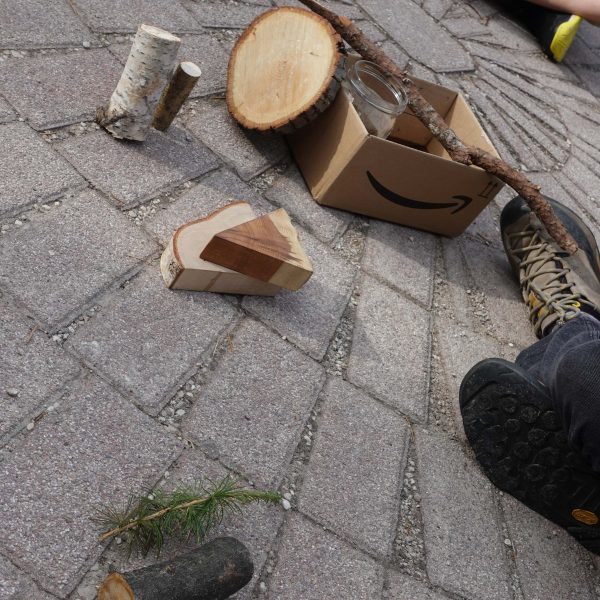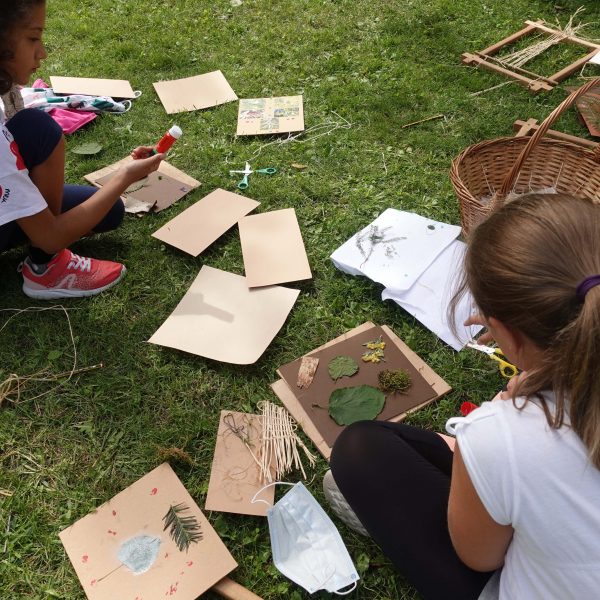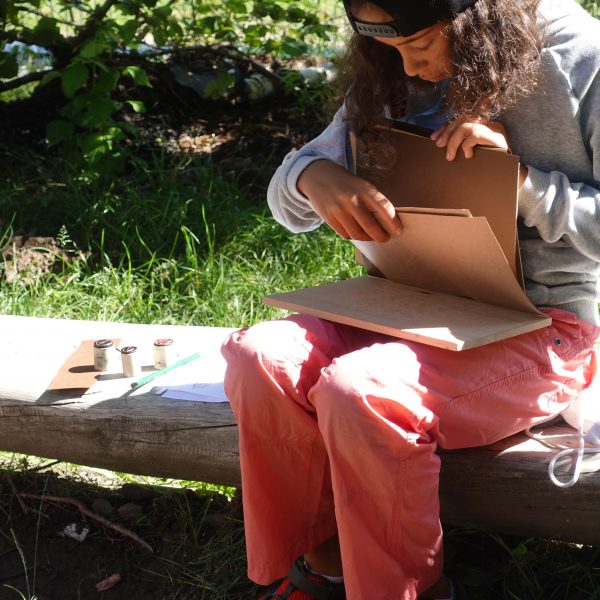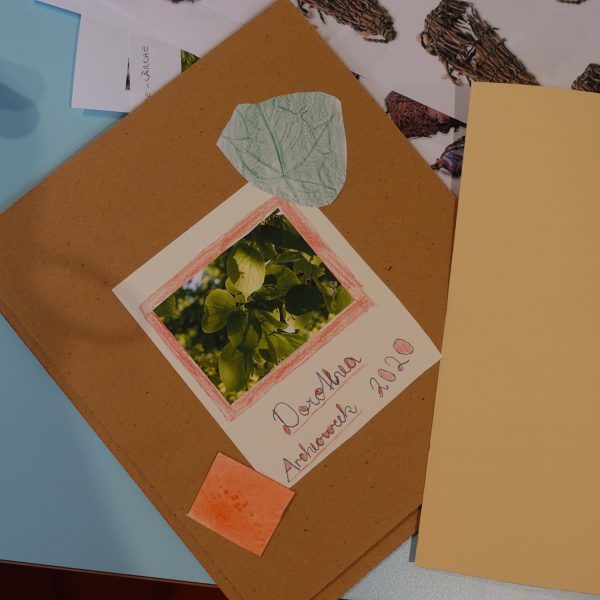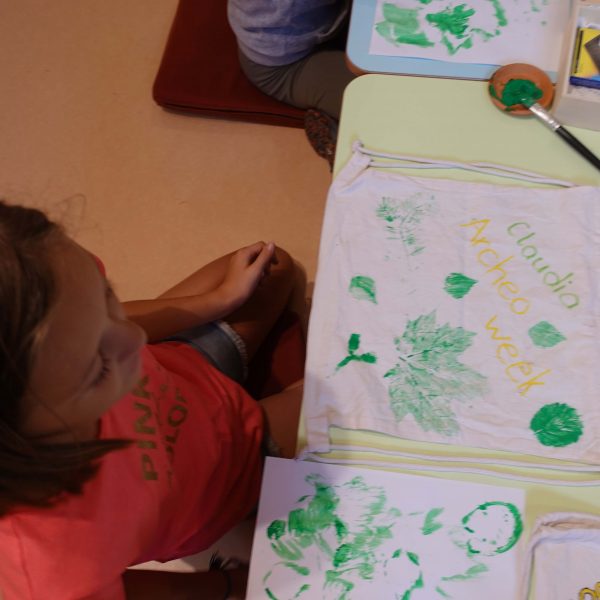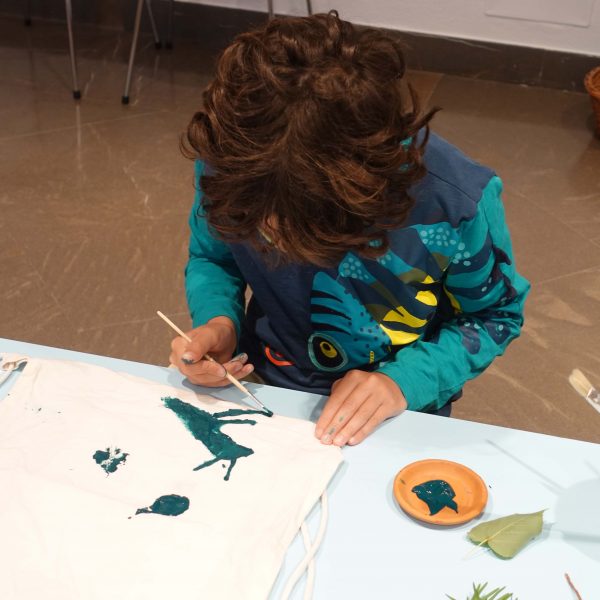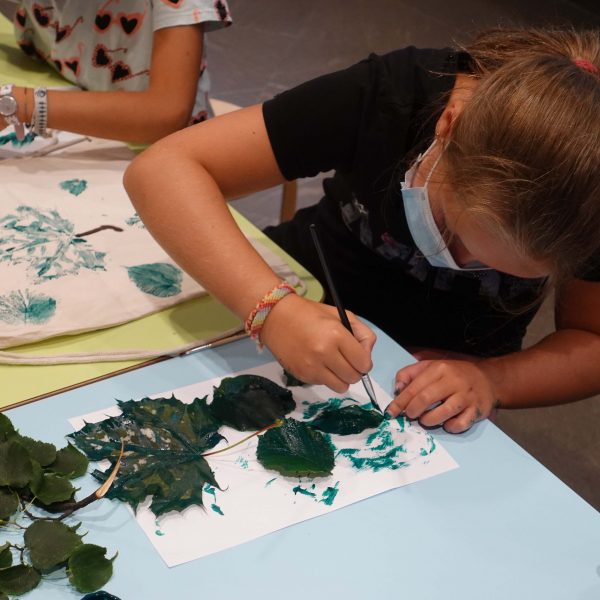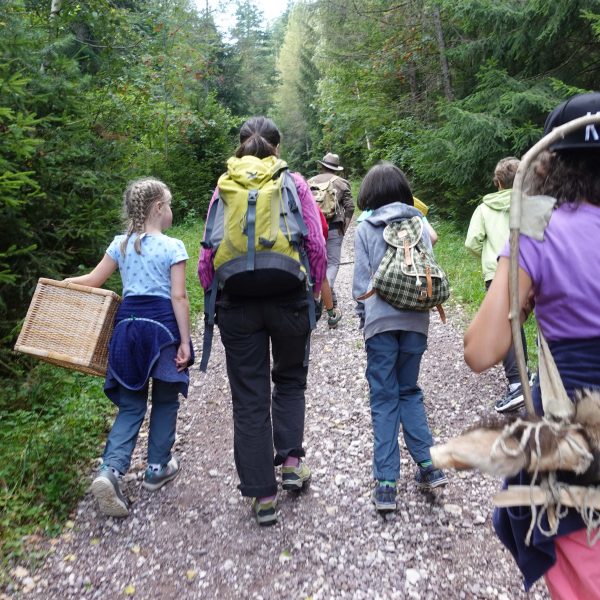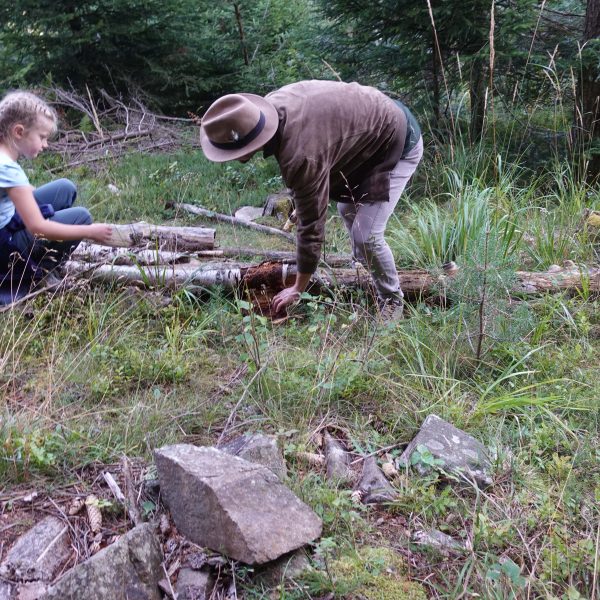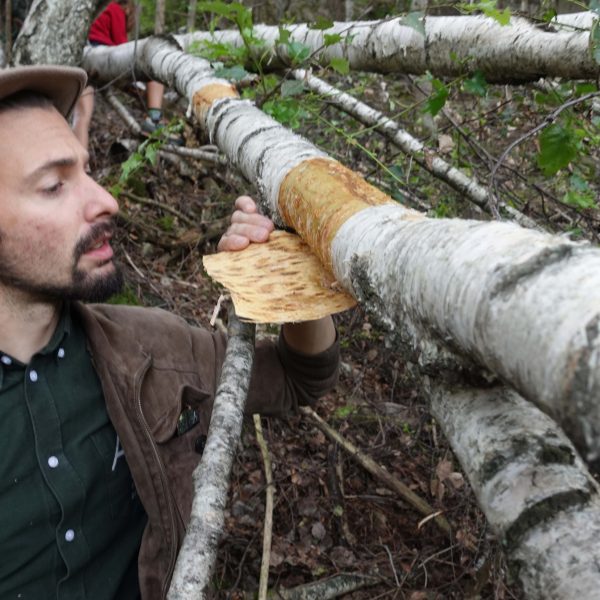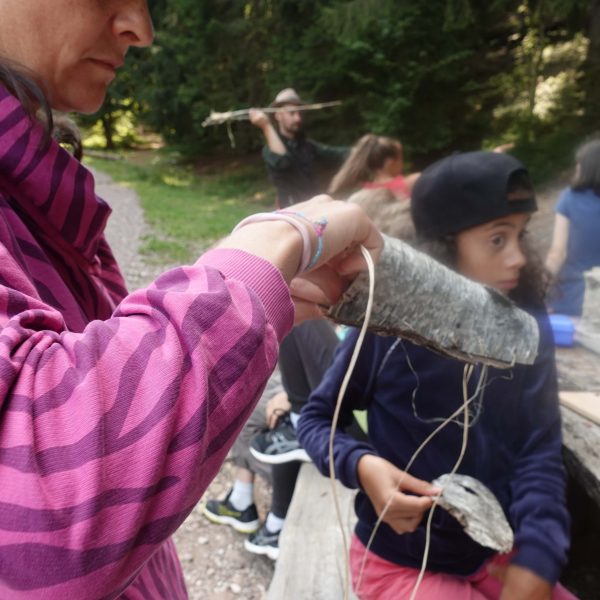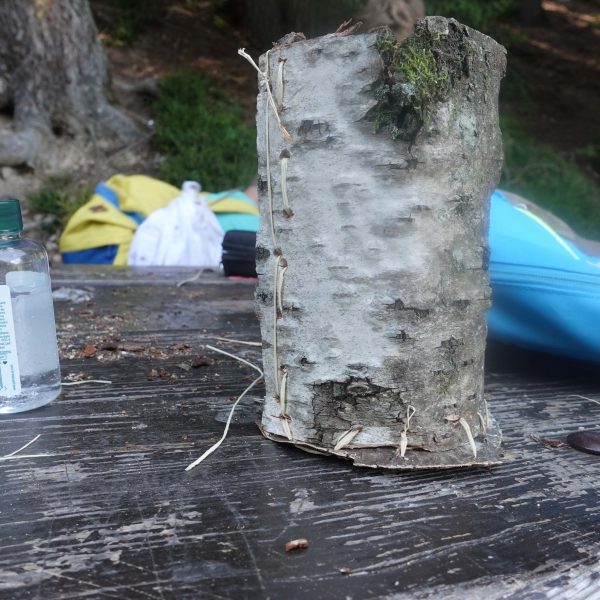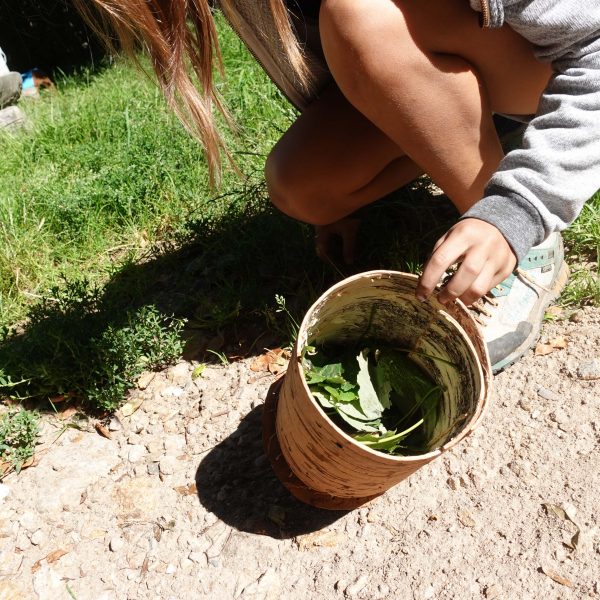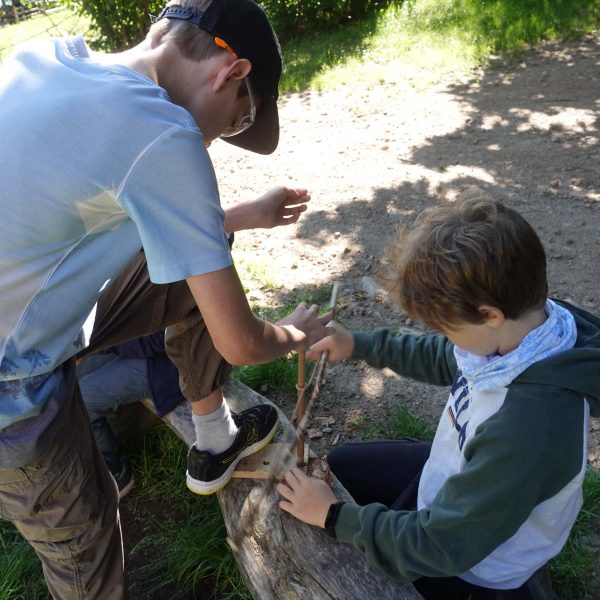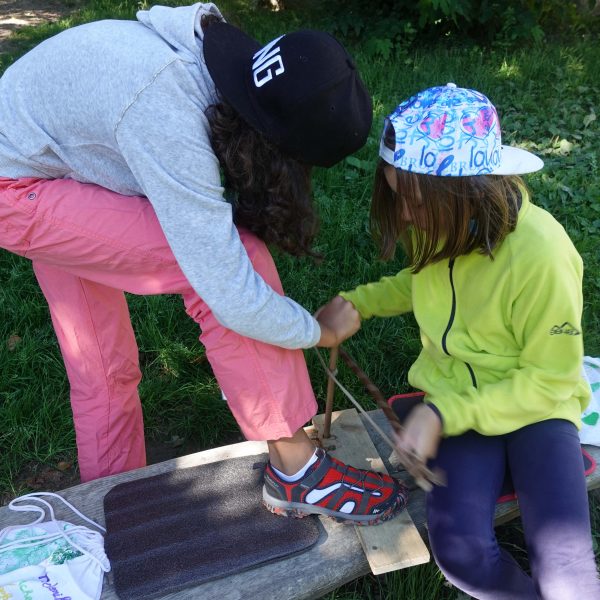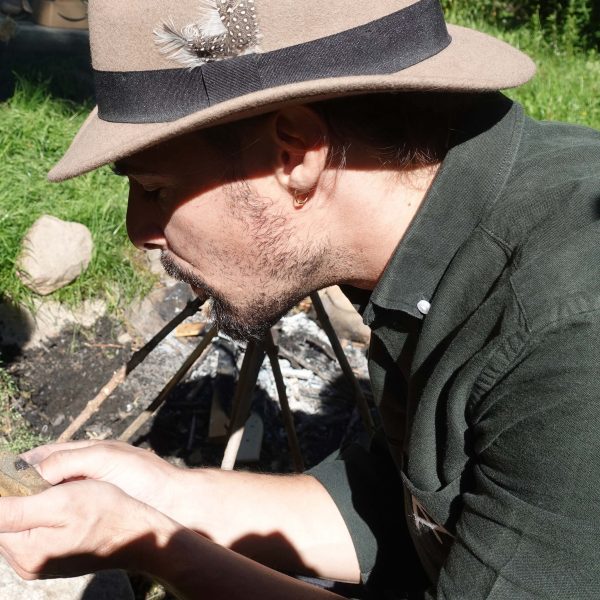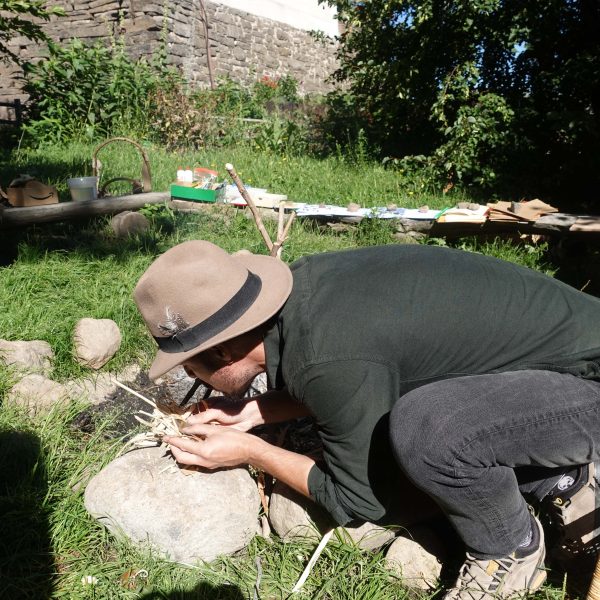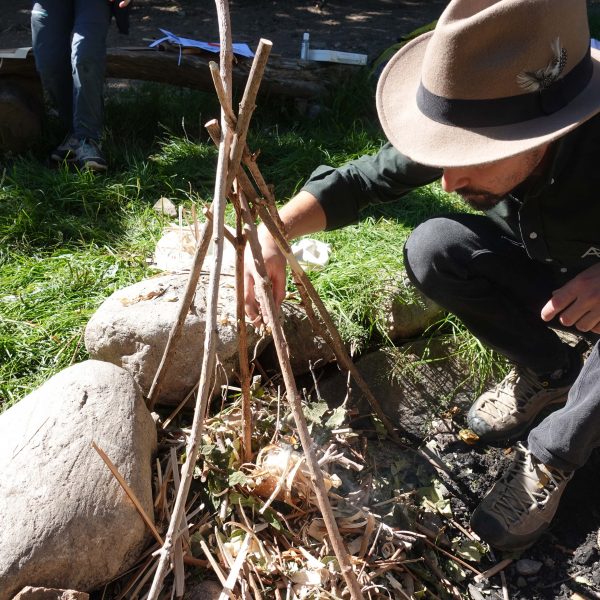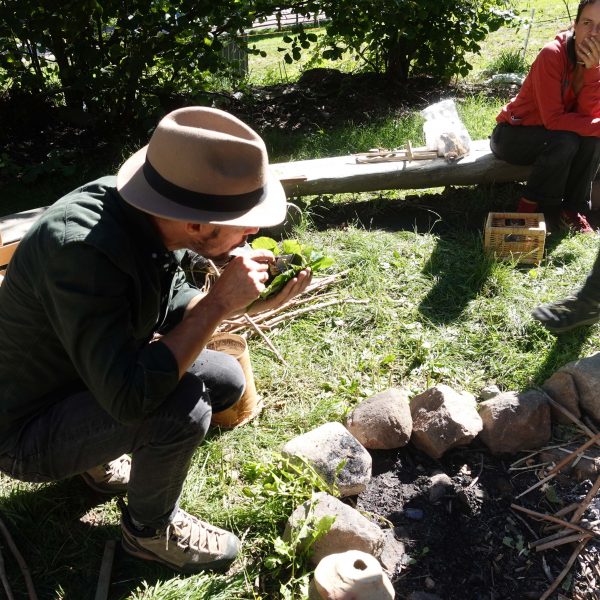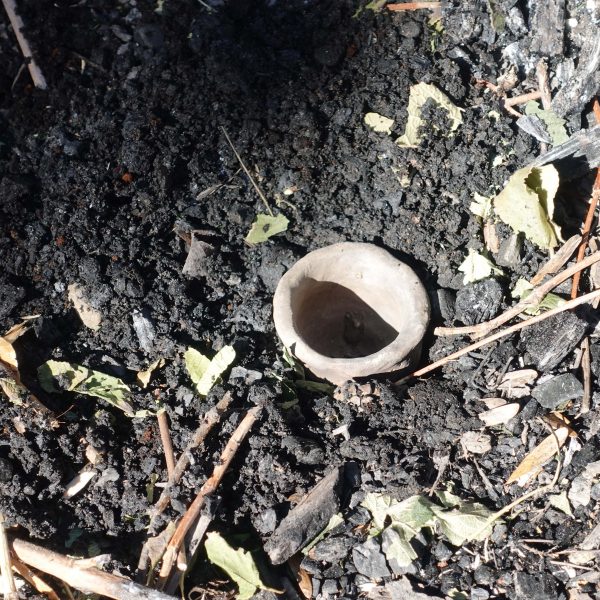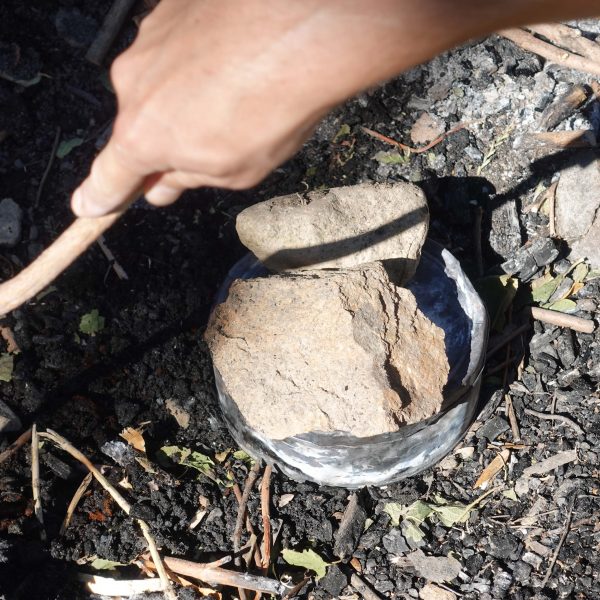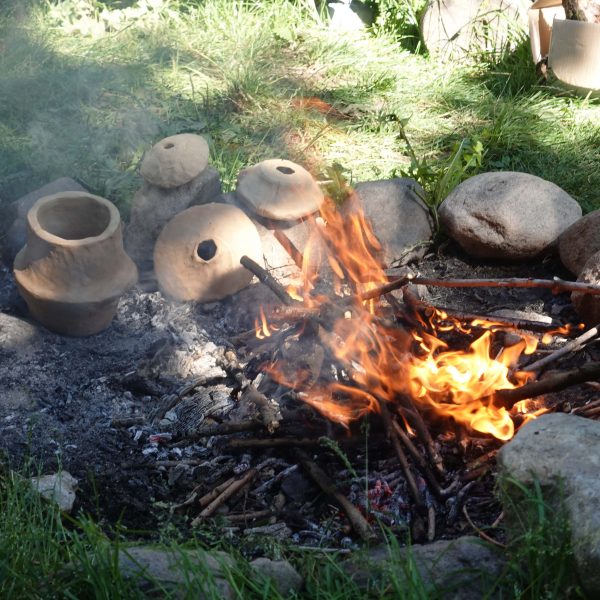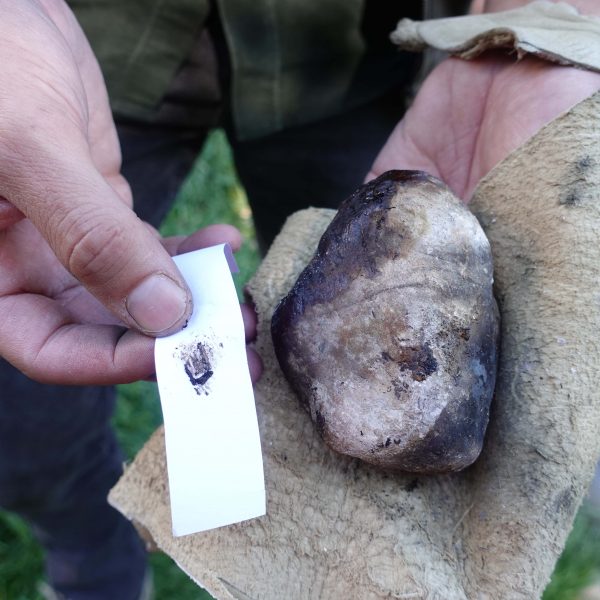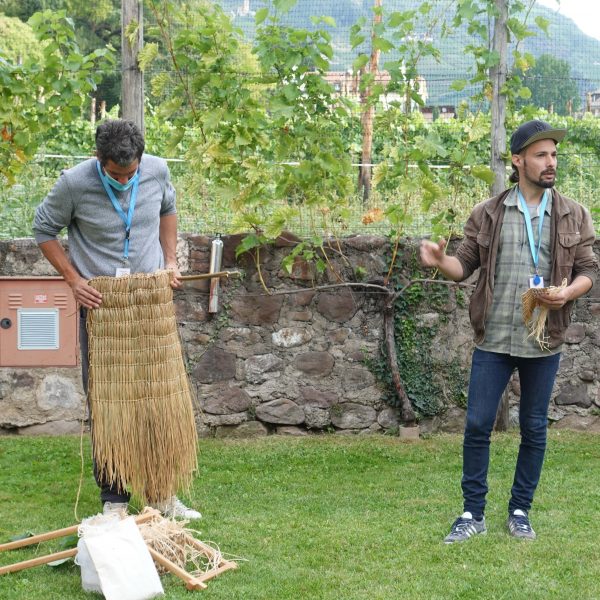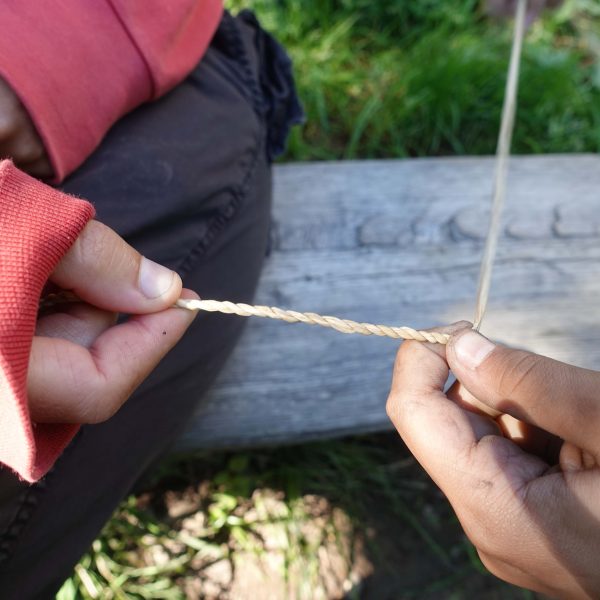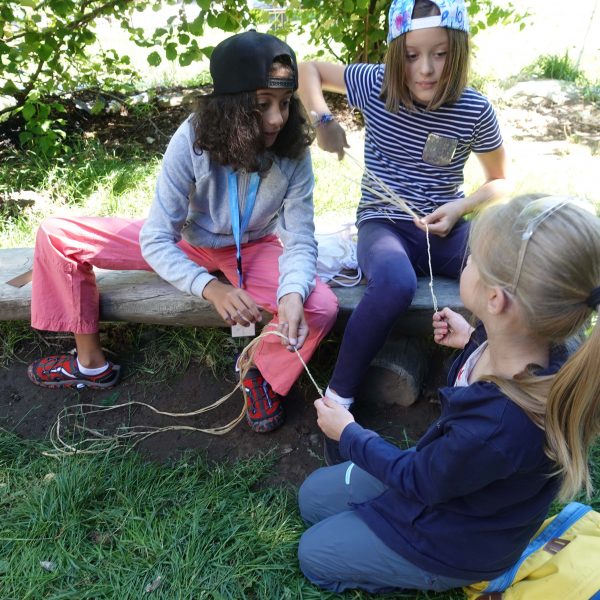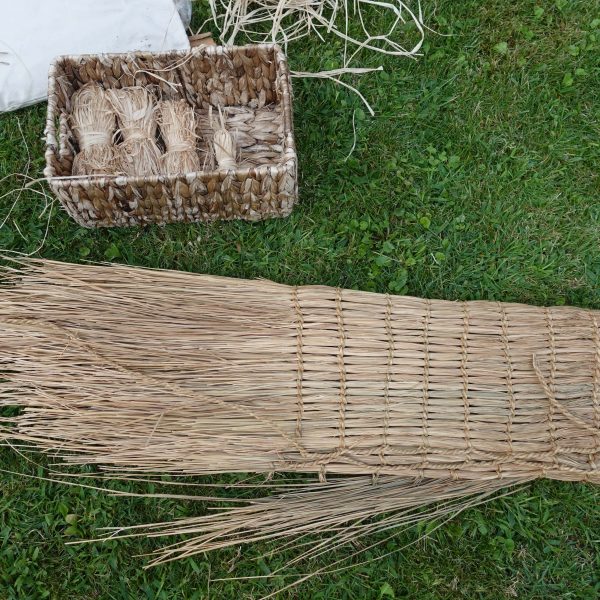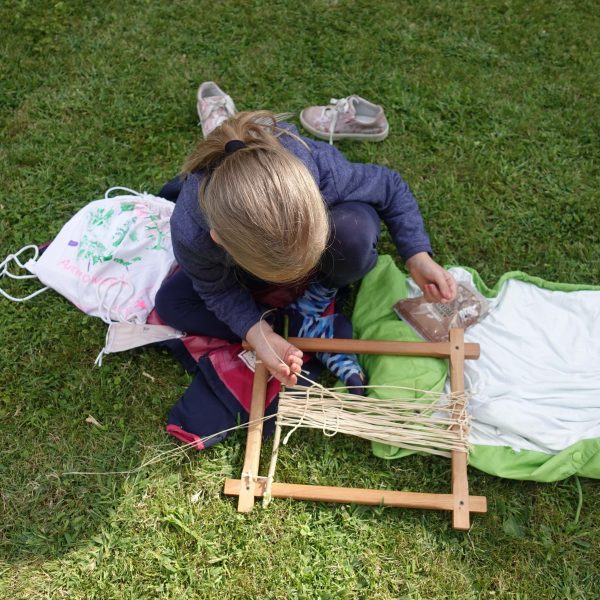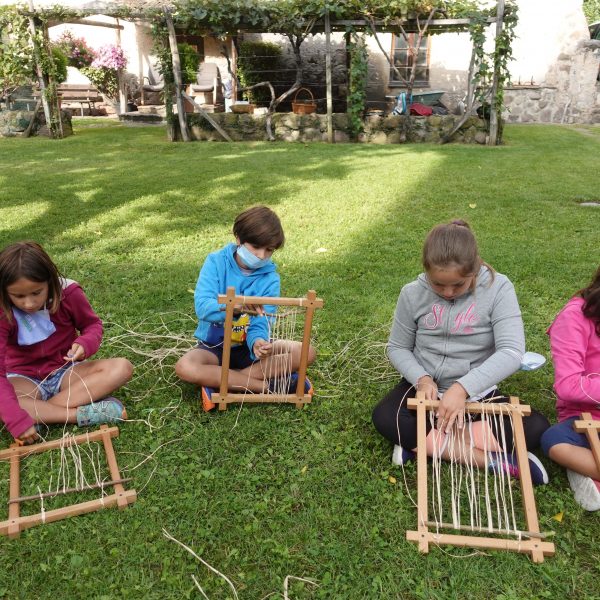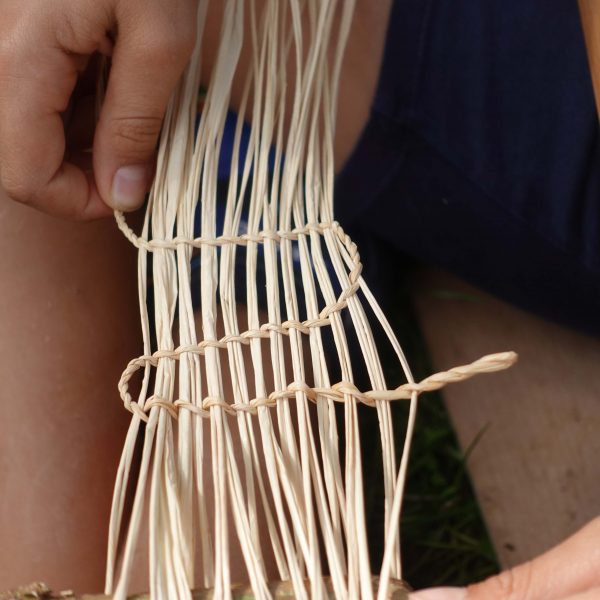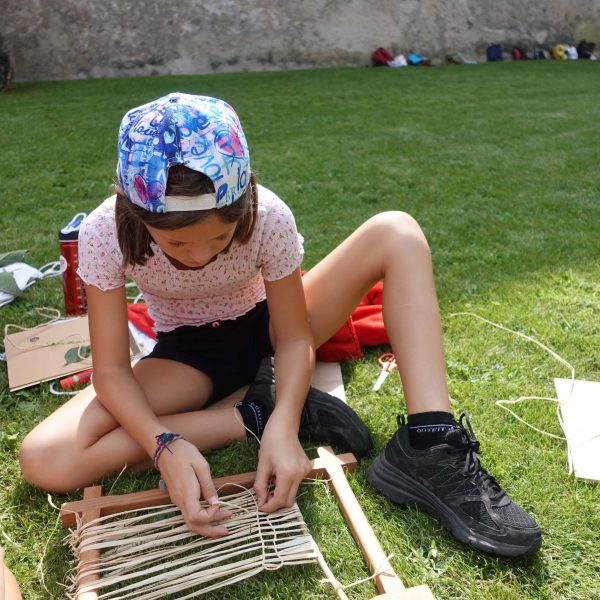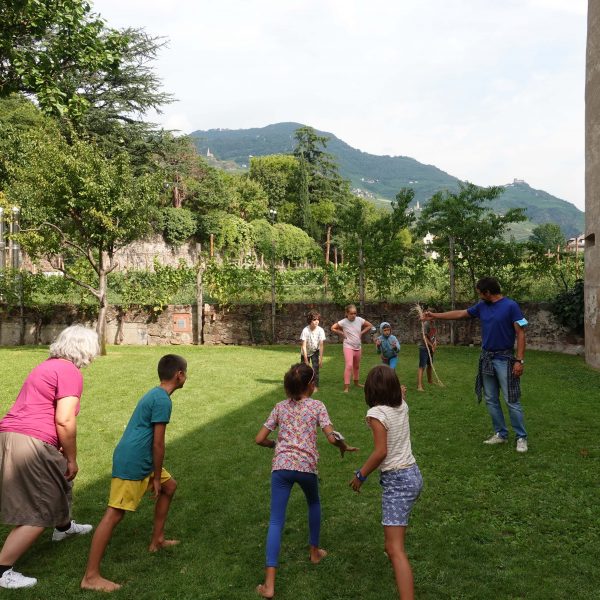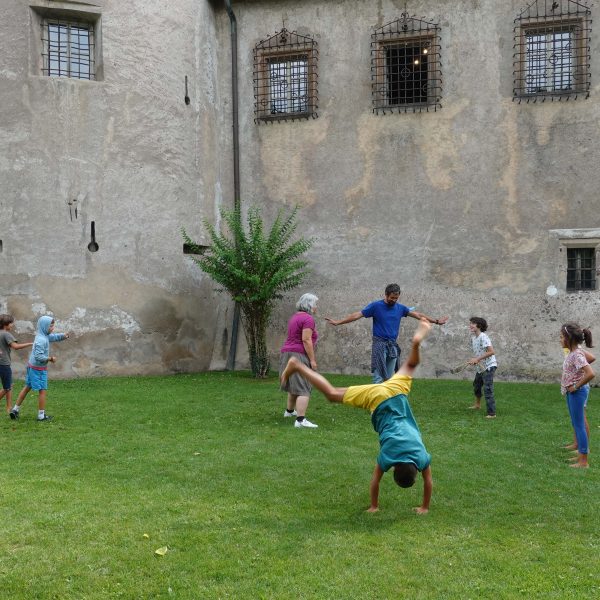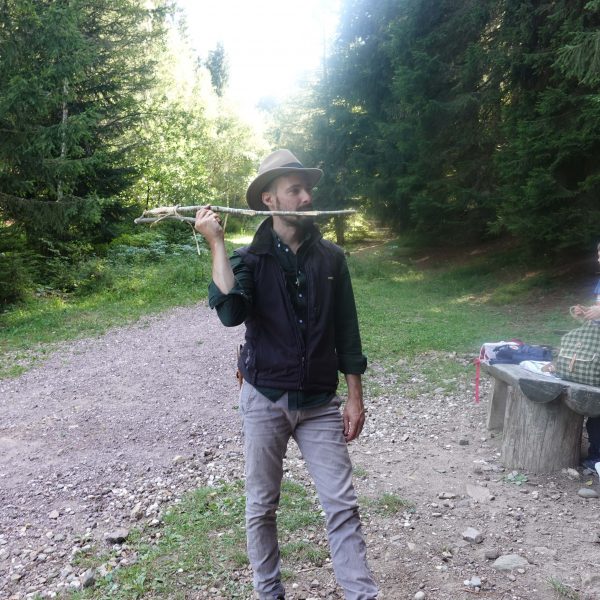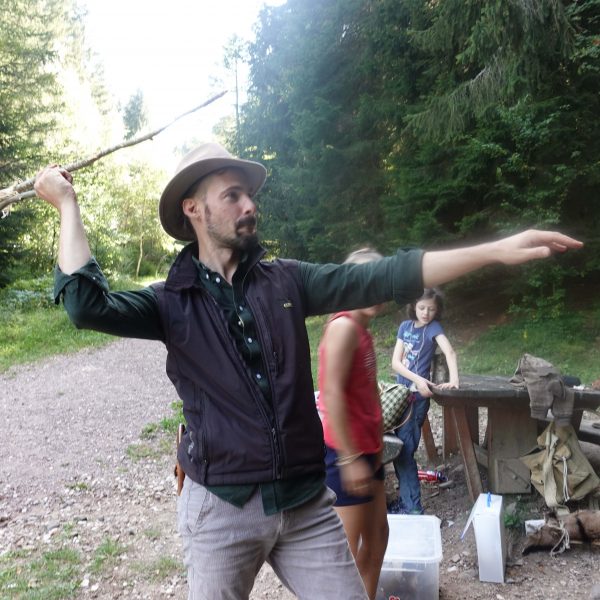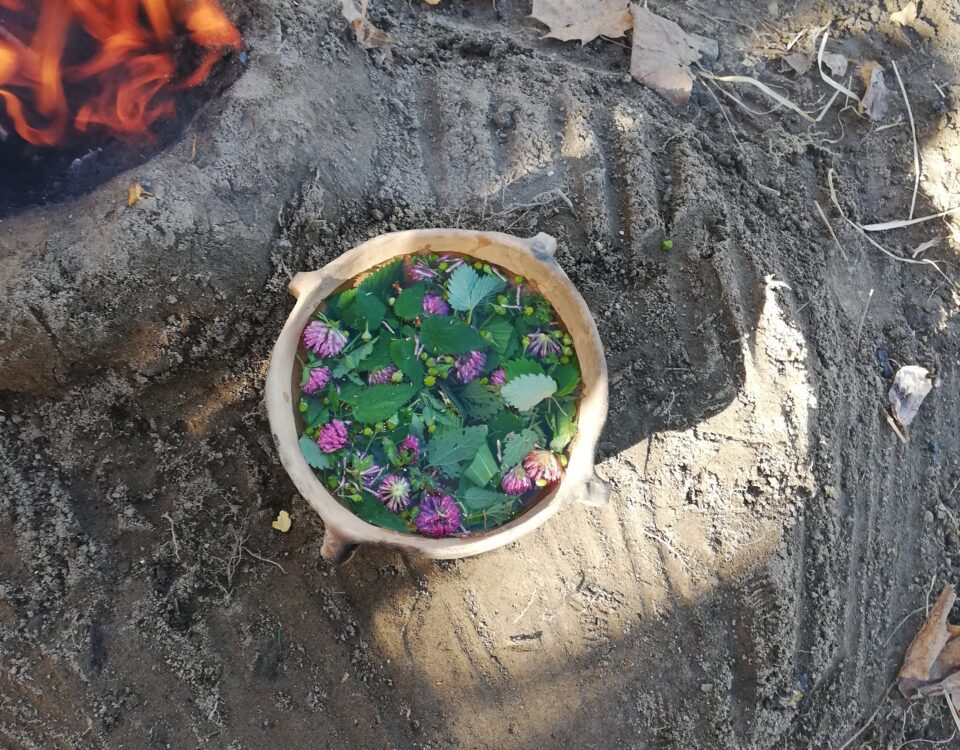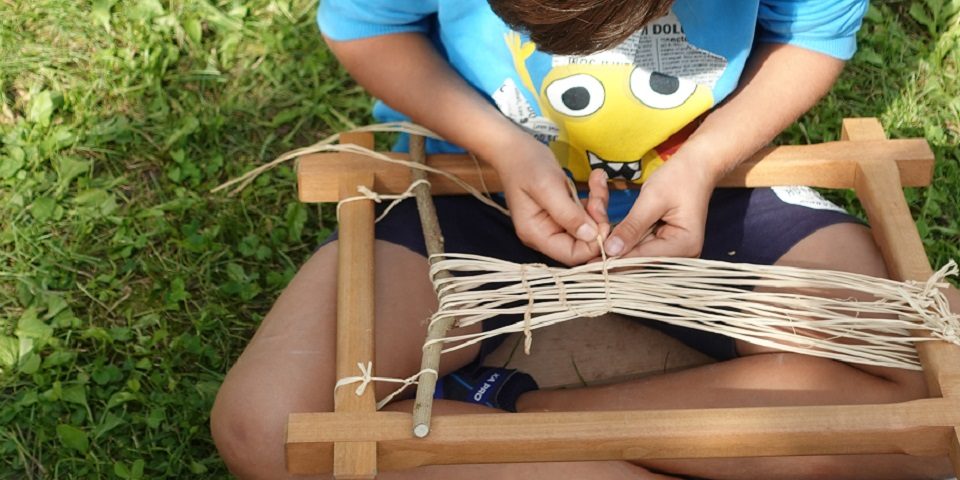
All the plants used for making Ӧtzi’s Stone Age tools
Our Archeoweek 2020
Following last year’s success, the South Tyrol Museum of Archaeology organized another summer holiday week for children this year. With the necessary distance and many activities in the great outdoors the little archaeology fans who participated did not have to give up leisure time in Corona Summer 2020. Over the course of 5 days, 14 children aged 8-12 became little experts at recognizing plants and therefore the materials used to make Ӧtzi’s equipment. Some objects like his birch bark container and braids made of linden bast could be recreated using the appropriate techniques. The children learned that starting a fire is not very easy and neither is boiling Stone Age glue from birch pitch: an art which even the most experienced archaeologists cannot always manage ;-).
Support Team: Giuliana Plotegher, Paola Claut, Nico Aldegani, and Alessandro Potì.
We would like to thank Maretsch Castle and the montessori.coop for their kind reception.
Photo Gallery:
1. The children are getting familiar with the most important plants used to make Ӧtzi’s equipment: birch, hazel, maple, linden, and many more. Leaves and flowers were collected in a botanical diary and used to paint a cloth backpack.
2. In Colle-Kohlern above Bolzano, both teams looked for old birch trunks to peel off their bark. Ӧtzi’s backpack made of hazel branches and small larch boards was also there.
3. You can sew containers like Ӧtzi’s from large pieces of bark. In it he carried small pieces of embers wrapped in maple leaves so that he could start a fire faster at the next opportunity.
4. Children learned to make birch tar, the glue of the Stone Age, from smaller pieces of birch bark. Birch bark was cut into little pieces and cooked under airtight conditions. During Archeoweek, a clay container was used for this which cooked in the campfire. We do not know how Ӧtzi made the birch tar which he used to fasten his axe blade, dagger, and arrowheads to wood. But he used it.
5. However, before doing that you first have to learn how to light a fire. This isn’t so easy, you see: you can use a bow drill to turn a wooden stick that stands on a flat piece of wood and turn it so quickly that it begins to smoke and glow. Alternatively, you can light a fire with pyrite and flint by striking them together and catching the sparks with a tinder fungus (a tree fungus). With a little patience and by carefully blowing air, a fire will grow from the glowing pyrite chip.
6. Braids made of grasses and linden bast are considered “plastic of the Stone Age” because all kinds of useful everyday items were made from them and they could be worked into almost any shape. Ӧtzi’s grass mat was made of such a mesh. He could use it as a rain cover or as a mat to lay on top of. Even the sheath for his dagger is made of linden bast. During Archeoweek, this technique was used to make beautiful braided belts and bracelet cords on the loom.
7. Nico Aldegani also demonstrated other Stone Age hunting techniques such as the throwing stick.
8. And among other things: a lot of movement and games in the fresh air!
Photos: © South Tyrol Museum of Archaeology


